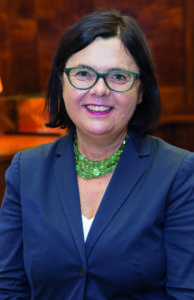
Marianne Brodmann outlines follow-up and surveillance protocols after endovascular treatments for peripheral arterial disease (PAD), arguing for a standardised approach to ensure best practice for patients who have gone through peripheral endovascular procedures.
Endovascular procedures have become a key element of treating patients with PAD, either with intermittent claudication or critical limb ischaemia. Nevertheless, there is currently no standardised approach and no general- or guidelines-derived recommendation for how to do this. The follow-up after these procedures is often dependent on facility resources, such as available manpower and equipment, or geography (urban versus rural).
What is the rationale of surveillance after endovascular procedures? It is important to accurately implement preventative strategies to avoid other cardiovascular events and disease progression in a patient cohort with a high risk of morbidity and mortality, while also avoiding recurrence of symptoms and the need for repeat revascularisation. The importance of this is amplified by the fact that we are facing an increasing disease burden of PAD patients needing treatment. In 2008, >98,000 endovascular procedures and >86,000 surgical revascularisations were performed for lower limb arterial disease in Germany alone, illustrating the burden of peripheral revascularisation interventions in Europe.
For a standardised approach to surveillance, we need to discuss several questions. What should we offer and how should we do it? Is follow-up with anklebrachial index (ABI) alone enough, or should we also perform duplex ultrasound? What are the timeframes to do this? Another important question is, who should perform the follow-up? One simple key element is the clinical follow-up. This also means that we should create awareness among patients about the symptoms that occur in revascularisation failure, and when immediate contact to vascular specialists is indicated.
With regards to imaging techniques, which help us to detect restenosis either in the immediate or long-term follow-up, duplex ultrasound is the most applicable. It is non-invasive and widely available, and can be repeated over time to detect subclinical and abnormalities. It has therefore become the first-line technique for follow-up. Duplex ultrasound surveillance has been reported to predict severe in-stent restenosis with a specificity of >90%.
Functional tests such as ABI or toe-brachial index (TBI) can further help to optimise surveillance of the lower limbs. Computed tomography angiography (CTA) and magnetic resonance angiography are mostly limited to the confirmation and investigation of duplex ultrasound findings, but can be performed straight away in urgent cases.
In cases of recurrent claudication, treadmill test with post-exercise ABI can assess the functional severity.
However, ensuring follow-up after endovascular procedures will also serve to prevent disease progression. Regular monitoring for risk factor modification, exercise training and medical therapy is a must. Even in patients with intermittent claudication, disease progression to chronic limb threatening ischaemia may be underestimated. In a meta-analysis of studies conducted between 1990 and 2015, 21% of patients with intermittent claudication were diagnosed with chronic limb threatening ischaemia during a five-year follow-up period, and 4%–27% of them suffered amputations.
How often should we do it?
There should be an immediate postprocedural follow-up the day after the procedure, to gain insight into the procedural success achieved. To detect early restenosis, the next follow-up should be performed one month later, and thereafter in a six month period up to one year. Long-term follow up should be performed annually. As for who should carry out the followup, this should be performed by the people taking care of patients with vascular disease, whether they are general practitioners or cardiovascular specialists, such as cardiologists, vascular physicians or vascular surgeons. The appropriateness of who carries this responsibility will vary according to the management of patients in different countries.
Marianne Brodmann is a vascular specialist at the Medical University of Graz, Austria.












